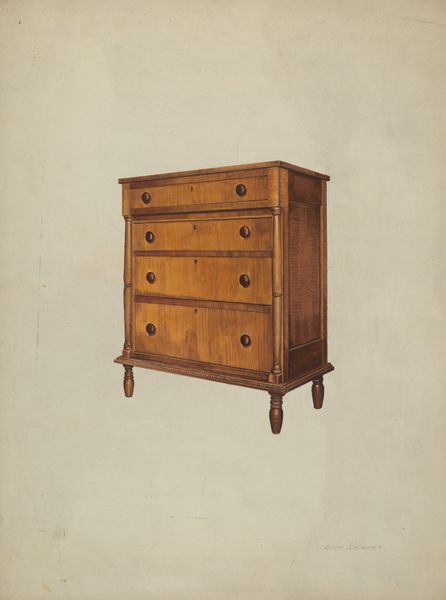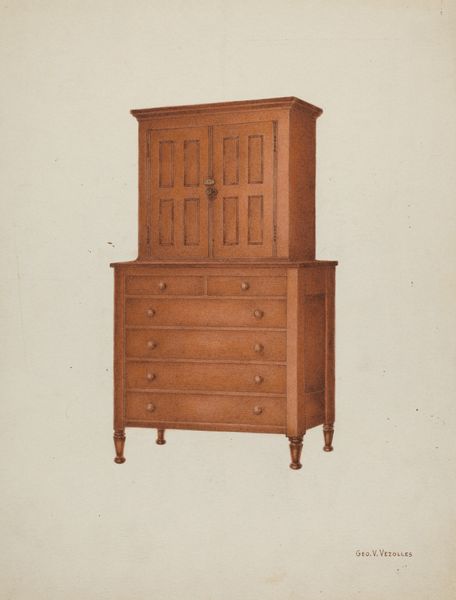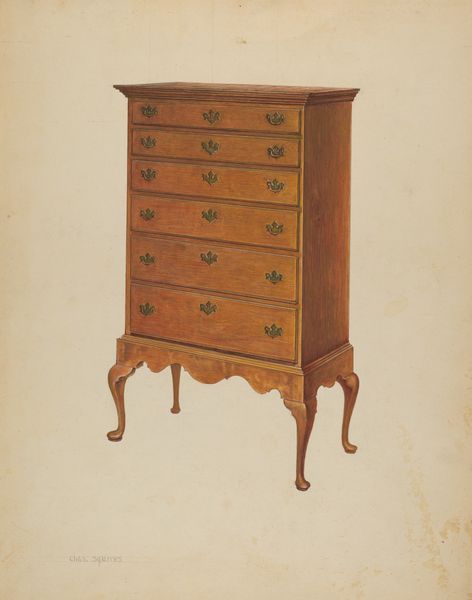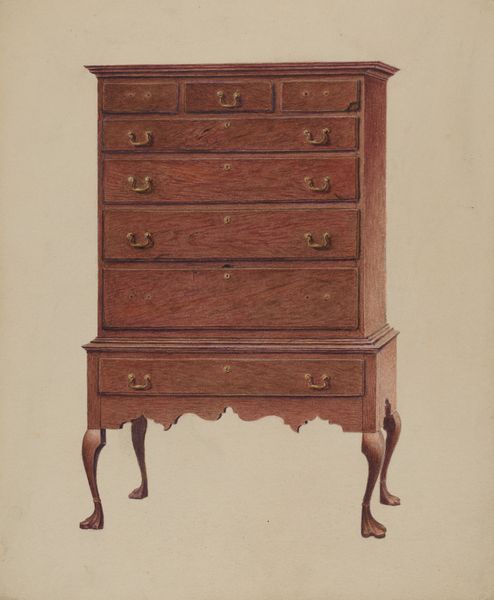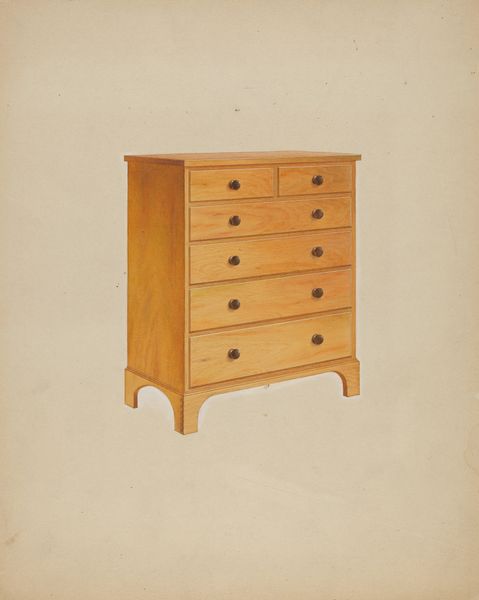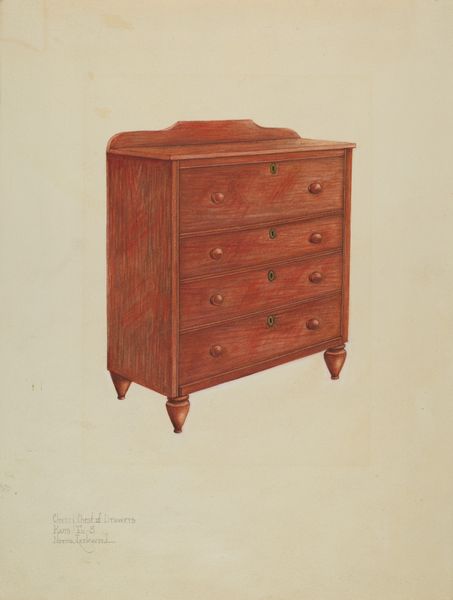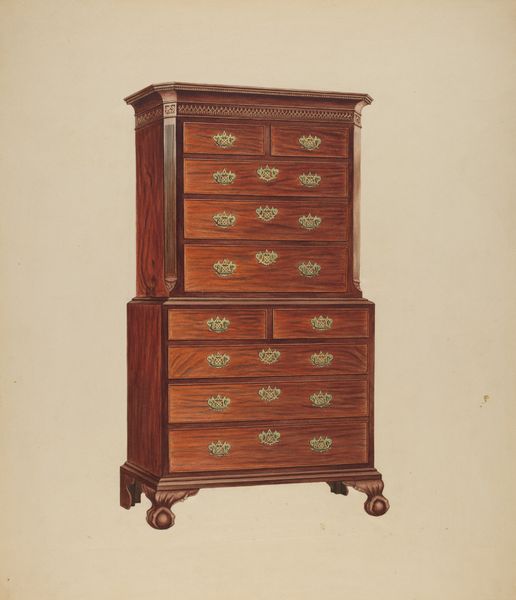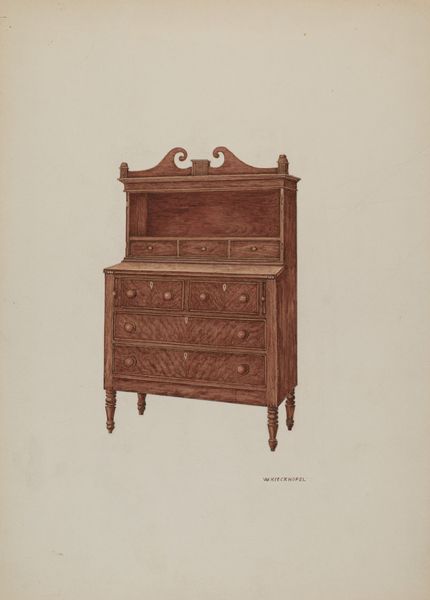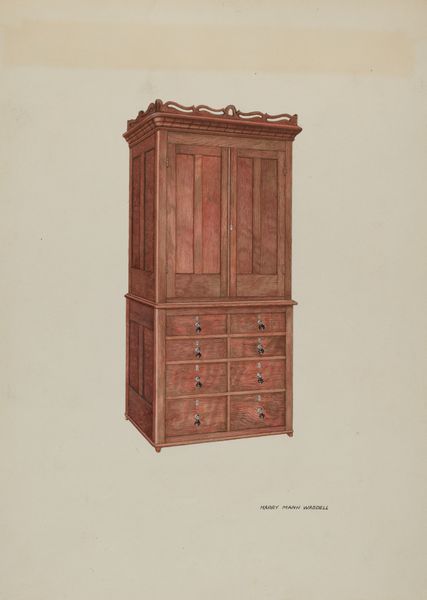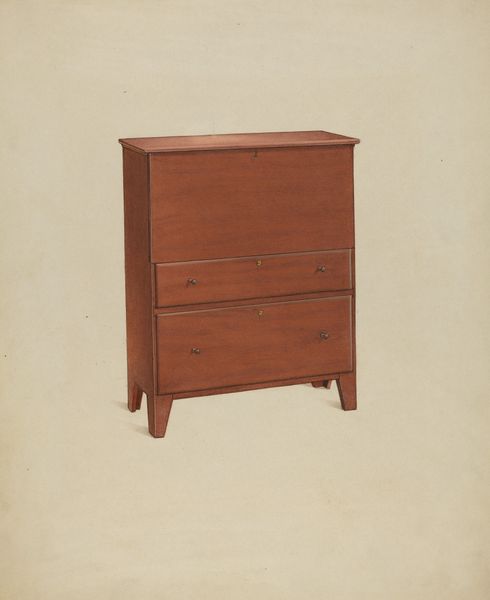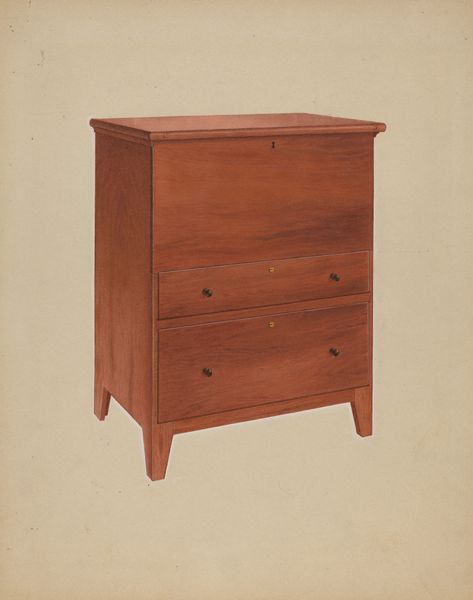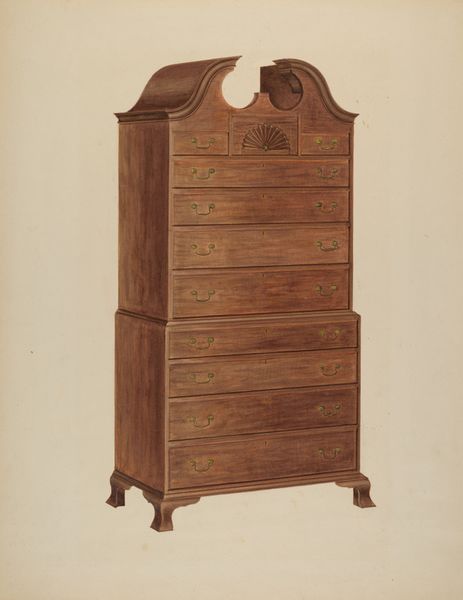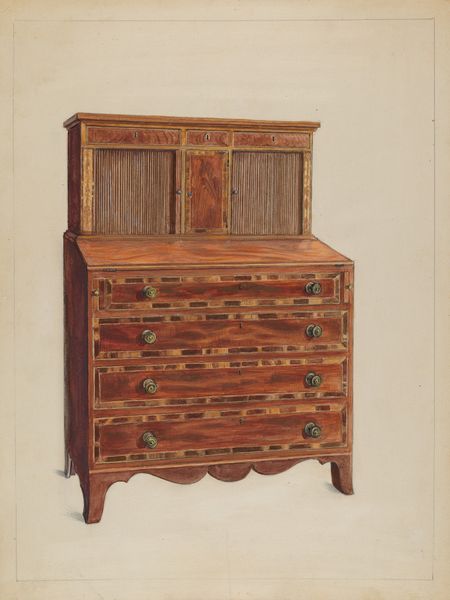
drawing, pencil
#
drawing
#
geometric
#
pencil
#
regionalism
Dimensions: overall: 37.9 x 33.9 cm (14 15/16 x 13 3/8 in.)
Copyright: National Gallery of Art: CC0 1.0
Curator: This is George V. Vezolles's "Shaker Cabinet," a drawing made with pencil from around 1935 to 1942. What strikes you first? Editor: It’s solid, monumental even, in a humble sort of way. Reminds me of growing up. Makes me feel safe, almost hugged by it. Funny, isn’t it, how something so rectilinear can conjure such…domestic bliss? Curator: Well, observe how Vezolles treats the geometry of it all. Notice how the drawing employs repeated vertical and horizontal elements, reinforcing a visual sense of stability and order which links the visual representation of this practical object with the values the Shaker community extolled. Editor: Right, everything in its place. And the muted browns and creams... they add to the quietude. Though, I admit, a bit more shadow and light would give it some real drama. Otherwise, it seems as if someone saw one once and just remembered its… essence, rather than its exact form. Does that make sense? Curator: Perfectly. Regionalist artists were not aiming for a clinical depiction, but a kind of remembering as you mention. This movement embraced a rejection of urban industrialism in favor of rural or small town depictions such as those which could be found across America’s Midwest during this period in order to reflect a sense of nostalgia and authenticity tied to American heritage. Vezolles is also stripping away excessive details, reducing the cabinet to its fundamental structure of simple geometric shapes in order to emphasize clarity of design, which highlights the efficiency and practicality inherent to Shaker design. Editor: Absolutely, no frills. I see it now, he's really drawing attention to these elements by making it almost severe, really underlining its… "Shakerness"! Like the pure, unadulterated concept of a cabinet distilled onto paper. It’s intriguing how an artist’s hand can take an object known for utility and show the cultural idea it held. Curator: Indeed, the visual vocabulary of structure, geometric forms, and muted palette work in tandem to depict more than just the drawing of this very functional piece. Editor: Thinking of utility is like remembering all the people that came before me and probably needed a piece just like it in their house... And how it must have sat square and calm, just like that one! Thanks for pointing all that out, I feel like it's looking back at me. Curator: It definitely is, perhaps even through time itself!
Comments
No comments
Be the first to comment and join the conversation on the ultimate creative platform.
